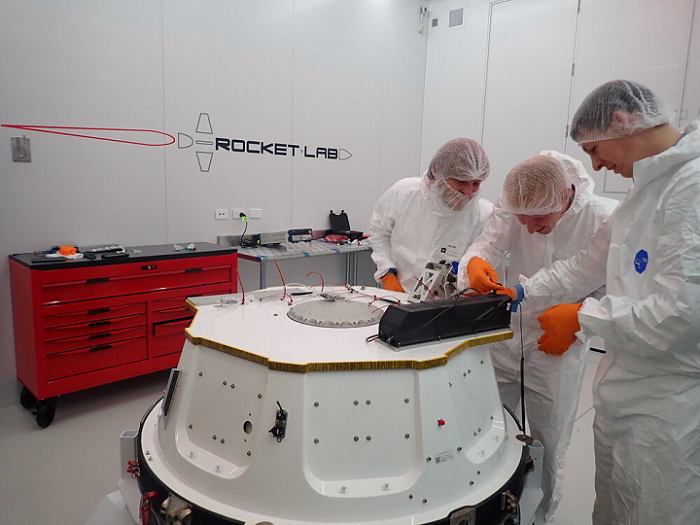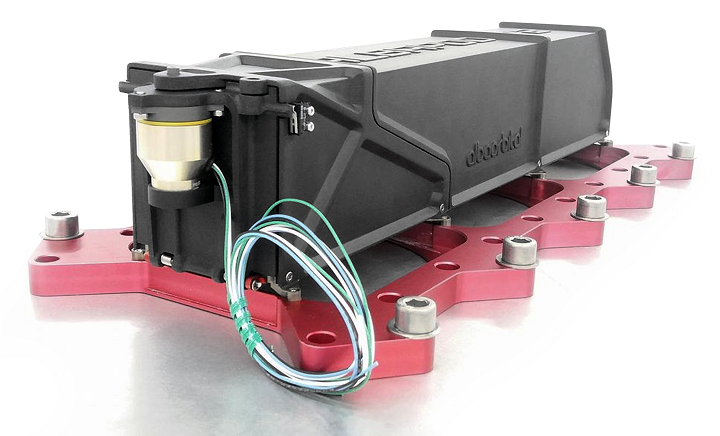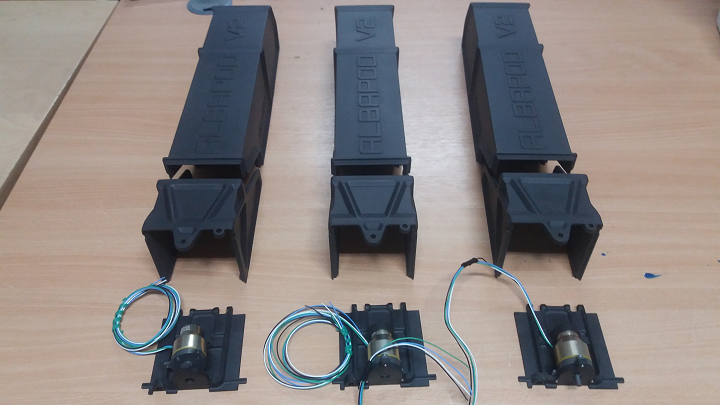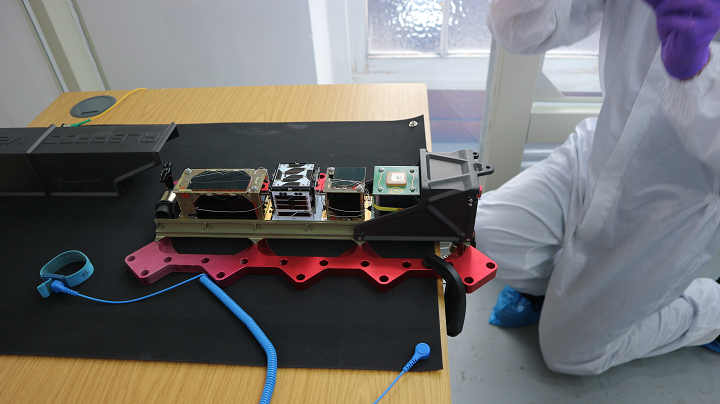First there were the smallsats, and the CubeSats. Now there’s something even smaller to launch into orbit – PocketQubes, a satellite with off-the-shelf electronic components that can fit into your pocket. One eighth the volume of a CubeSat, these tiny space research satellites are 5 cm cubed, with a mass of 250 grams, and while they were only conceived of about ten years ago, interest in them is growing quickly, as it’s becoming more expensive to launch CubeSats into low Earth orbit.
 Two years ago, the first PocketQube Standard was issued, and one of the contributors is Scottish high-tech SME Alba Orbital. The company supports this satellite class, as it builds its own PocketQube platforms and provides global companies, space agencies, and universities parts and launches.
Two years ago, the first PocketQube Standard was issued, and one of the contributors is Scottish high-tech SME Alba Orbital. The company supports this satellite class, as it builds its own PocketQube platforms and provides global companies, space agencies, and universities parts and launches.
Alba Orbital needed to improve the access and manufacturability, and reduce the weight, of its PocketQube satellite deployer, the AlbaPod 2.0, along with adding some new safety features, and is partnering with CRP Technology on the project. The Italian 3D printing company has used its patented Windform TOP-LINE composite materials for aerospace applications in the past, so it was more than up to the task.
First, CRP analyzed the 2D and 3D files for the deployer, so it could best advise Alba Orbital on which material to use with its Selective Laser Sintering (SLS) process. The high-performance Windform XT 2.0 carbon composite material was chosen, thanks to its increased tensile strength, elongation at break, and tensile modulus.
“As the product needed to withstand a launch to space while containing several satellites, the pod needed to withstand high vibrations, and in the worst scenario, contain any satellite that breaks free internally,” said the Alba Orbital team. “Windform ® XT 2.0’s toughness and strength make it a perfect candidate for this use case.”
Weight reduction is another important design goal for aerospace parts, and the material needs to be flight-approved due to strict degassing rules in space. Windform XT 2.0 has already been approved by major launch providers, making it an easy choice for the launcher.
“Windform® XT 2.0 is a non-outgassing, lightweight fibre reinforced polyamide plastic very similar to Nylon. The material combined with the manufacturing technique allowed us the option to design parts that can not be manufactured with traditional techniques, with thin sections and extremely complex geometry’s, and these parts can be manufactured and delivered in a fraction of the time for a traditional supply chain,” Alba Orbital said.
Once Alba Orbital sent the final STP file, CRP Technology quickly created the lightweight AlbaPod v2, a 3D printed deployer for PocketQube-compatible satellites, flight-proven 6P (up to six satellites) and weighing 60% less than the AlbaPod v1.
“The most innovative aspect of the project was the sheer number of components we switched over to Windform ® XT 2.0, not only was the shell redesigned in the material, but also the moving ejection mechanism and door assembly,” Alba Orbital notes.
The 3D printed AlbaPod v2 PocketQube deployer complies with Alba Orbital’s standards, and after performing many tests on the device, Alba Orbital says it has passed the control criteria.
“This is critical,” they said about the part’s mechanical performance. “Not only does the full assembly need to function correctly to facilitate the deployment of the satellites inside, but must also contain the satellites in the event of catastrophic failure of a payload during the launch as anything breaking free could fatally damage other payloads or the launch vehicle itself. This was tested thoroughly with free masses on vibration tables at extremely high loading and the shell held up phenomenally.
“Additionally weight is a major concern with anything going into space due to the costs associated, utilising Windform ® XT 2.0 allowed us to reduce the mass of a number of major components.”
Integrations began this fall, and six PocketQube satellites were launched into orbit by Alba Orbital in December on the 3D printed AlbaPod v2. The Alba Cluster 2 mission was in orbit for 100 days, and a launch via the 3D printed AlbaPod v2 for the Alba Cluster 3 mission is expected to occur later this year.
“3D printing allows us to rapidly improve design and customise/create bespoke launchers in the future for demanding payloads which may fall outside the Pocketqube standards or require special considerations,” Alba Orbital said.
“It will also allow the fast integration of new release mechanisms allowing us to switch manufacturers comparatively quickly and easily if problems with supply chain arise.”

The first of the two fully loaded AlbaPod 2.0 being attached to the kick stage of Rocket Labs Electron rockets for launch.
The AlbaPod v2 manufacturing experience will be presented this October 8th and 9th at the 4th Annual PocketQube Workshop 2020, held in the Glasgow University Union. The event brings together top innovators from the PocketQube community so they can explore the technology.
Discuss this and other 3D printing topics at 3DPrintBoard.com or share your thoughts in the Facebook comments below.
(Images: Courtesy of Alba Orbital)
The post CRP Technology Makes 3D Printed PocketQube Satellite Deployer for Alba Orbital appeared first on 3DPrint.com | The Voice of 3D Printing / Additive Manufacturing.





